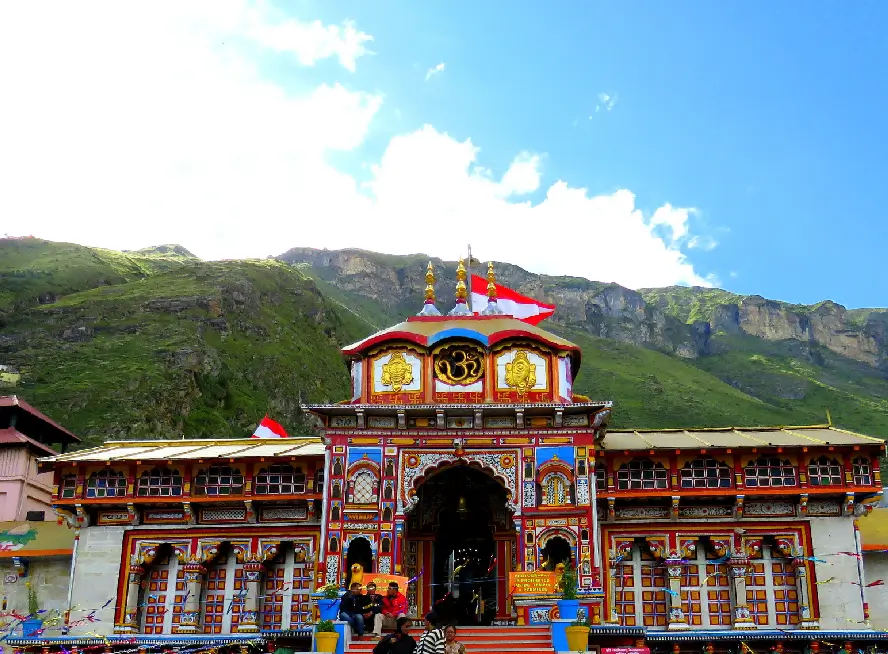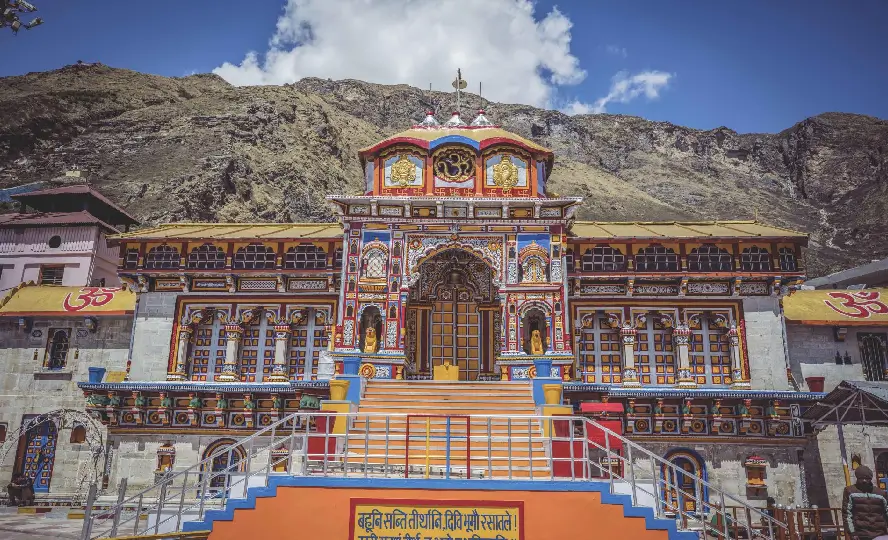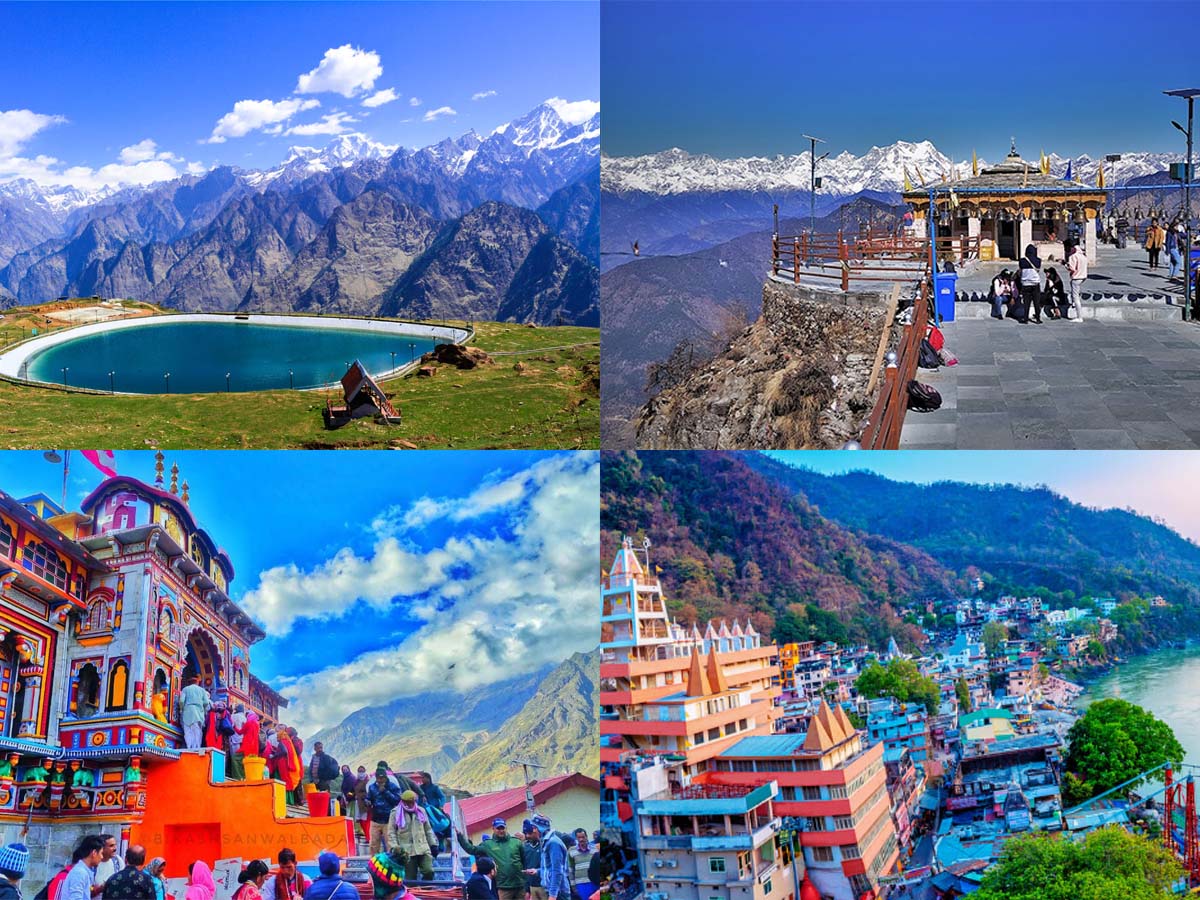BADRINATH DHAM

Badrinath Yatra Tour
Among the oldest pilgrimage sites in India, Badrinath Dham or Badrinath temple has immense significance for Hinduism. Nestled in the Garhwal hills near the Alaknanda river, at an altitude of 10,279 ft, the temple offers scenic views of the snow-clad Himalayas and quaint surroundings. The natural beauty of the holy site draws many visitors from across the country. The temple, situated in the small town of Badrinath in the state of Uttarakhand, is dedicated to Lord Vishnu who is considered to be the protector in Hinduism. Badrinath Temple is one of the 108 Divyadesha (holy site) for Vishnu followers, and alongside 3 other sites, forms Hinduism’s holiest Char Dhams, or, Four Sites of pilgrimage.
It is no wonder then, that Badrinath welcomes more than 1 million visitors every year, making it one of the most visited religious destinations in India. It is widely believed that the temple was founded by the renowned ascetic, Adi Shankaracharya.
In addition to various idols of Gods and Goddesses, Badrinath temple houses a 1 metre tall black stone idol of Lord Vishnu which is believed to be one of the eight swayam vyakta kshetras (self-manifested statues). The Vishnu shrine has a majestic gate which is painted with vivid colours. The temple also has a Tapta Kund (hot water spring) which is believed to possess medicinal properties. Visitors must plan their visit during the Mata Murti Ka Mela, or the Badri Kedar Festival. Both festivals are celebrated with great enthusiasm.
History & Religious Significance of Badrinath Temple
According to a popular legend, Lord Vishnu came to the present-day site of the Badrinath temple seeking a quiet place where he could meditate. Enveloped by the undisturbed peace, Vishnu was so deeply engrossed in meditation, he could not even feel the bitter cold against his body. Goddess Lakshmi, who was his consort, manifested herself in the form of a Badri Tree (also known as Jujube) to make sure he was protected from extreme weather conditions. Impressed by Lakshmi’s devotion, Lord Vishnu named this site Badrikashram.

The site also finds mention in the Vishnu Purana. According to the ancient text, the site was often visited by Nara and Narayana, sons of Dharam, who were in search of a place to set up their hermitage. Both men were believed to be human incarnations of Lord Vishnu. When they chanced upon the site with Alaknanda’s springs, they knew they had found the ideal location for their ashram.
During the Vedic Era, the deity Badrinarayan and a temple dedicated to him at this very location, has found multiple mentions in various texts. Historical accounts suggest the temple existed since 500 BC.
Badrinath Yatra Opening Dates 2025
Badrinath Temple is located in a place that experiences extreme weather conditions, especially during winters. The temple remains closed from November to April. In 2025, the temple will reopen its doors to pilgrims on May 04. Preparations for the Badrinath Yatra 2025 have already begun.
Being an important center of Hinduism, the opening and closing dates of the temple are decided on auspicious days of the Hindu calendar. The opening date is declared on Basant Panchmi while the closing date is declared on Vijaya Dashmi. The entry to Badrinath temple is completely free for all visitors. It remains open from 4:30 AM in the morning to 1:00 PM in the afternoon.
In the evening, the temple is open from 4:00 PM to 9:00 PM. Darshan of Shri Badrinath Ji for the general public opens around 7:30-8:00 AM.
Pooja in Badrinath Temple
Many special poojas (prayers) are performed on behest of devotees. A dip in the Tapta Kund is compulsory prior to any pooja. The rituals of the morning pooja include Adhishek, Gitapath, Maha Abhishek, and Bhagwat Path, whereas evening pooja rituals are Aarti and Geet Govind. Devotees may make bookings for Badrinath poojas with the Badrinath Mandir Committee. It is widely believed that the procedures of daily rituals and prayers have been laid by Adi Shankaracharya.
Best Time to Visit Badrinath Dham
Summer season, or the months from May to July is the ideal time to visit Badrinath Temple. Although landslides and road blockages do occur during monsoons, you can still visit the Badrinath Dham.
How to Reach Badrinath?

By Air : The nearest airport from Badrinath is the Jolly Grant Airport in Dehradun (311 km). The airport offers connections to Delhi, Mumbai, Amritsar, Lucknow, Chandigarh, Dharamshala, Jammu, and other cities. Helicopter services to Badrinath are also available, and we can assist you with the booking of helicopter tours to Badrinath.

By Road : Badrinath is connected by road to major towns such as Delhi, Chandigarh, Dehradun, Haridwar, and Rishikesh via NH 7. Distance between Delhi and Badrinath is roughly 540 km, and between Haridwar and Badrinath is roughly 320 km. Visitors can also opt for interstate and intrastate buses which are safe, affordable, and comfortable.

By Train : Haridwar Railway Station (318 km) is the nearest railway station from Badrinath. Another option is the Dehradun Railway Station (340 km), depending upon your point of origin. The railway station is connected to several major cities.
